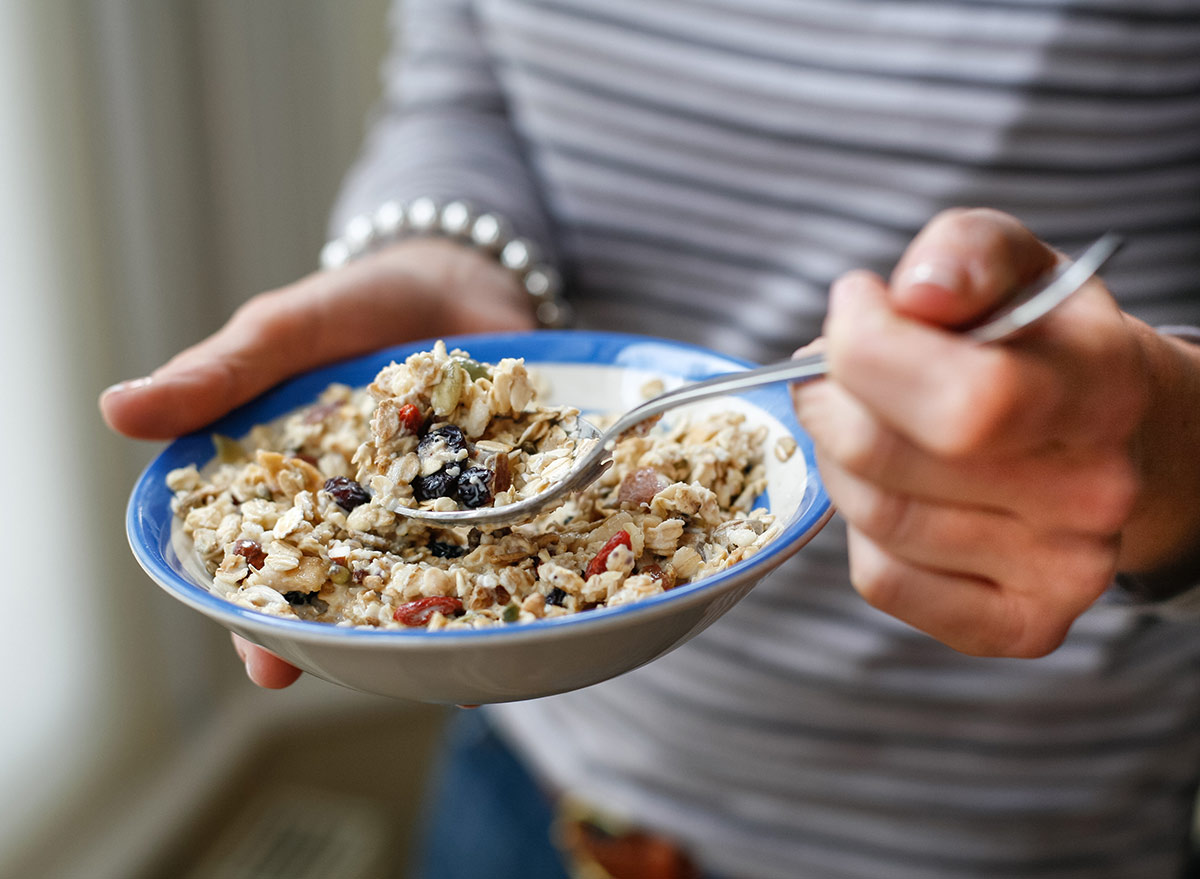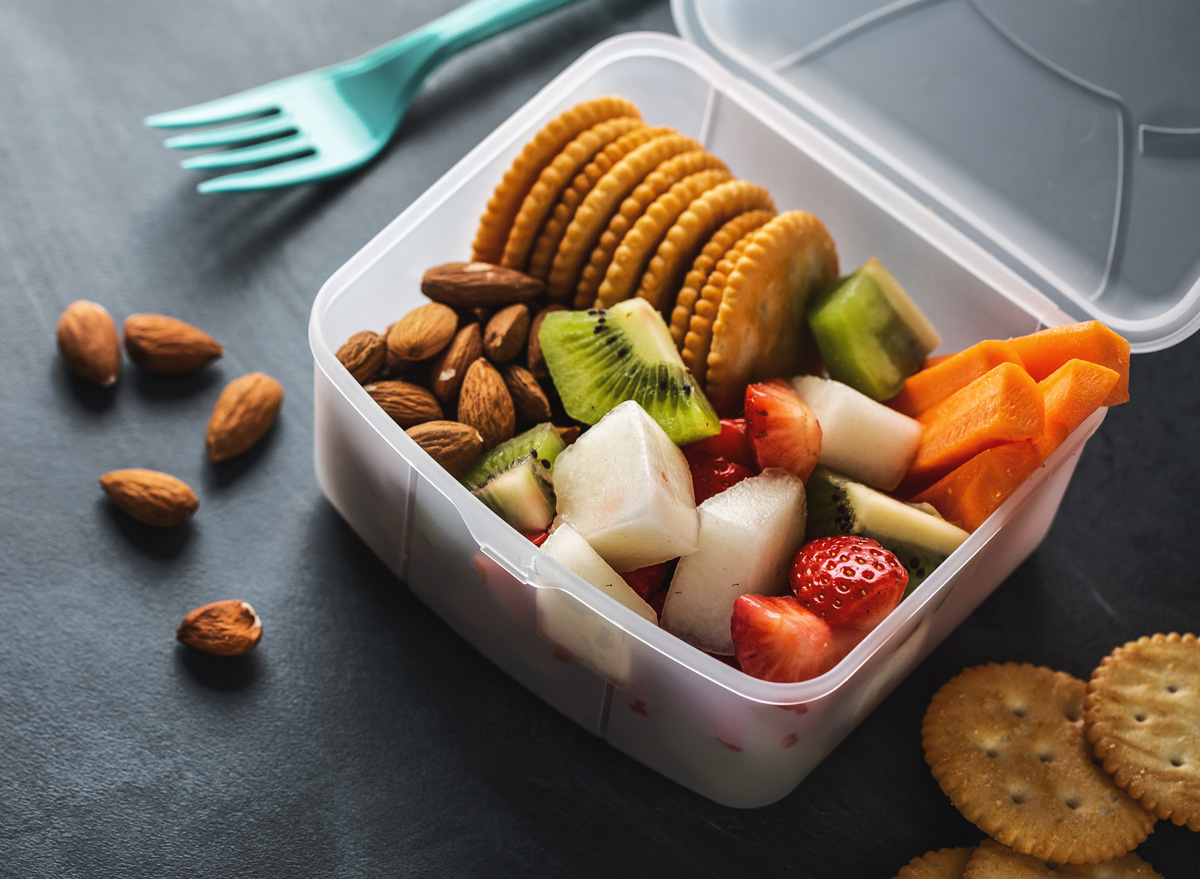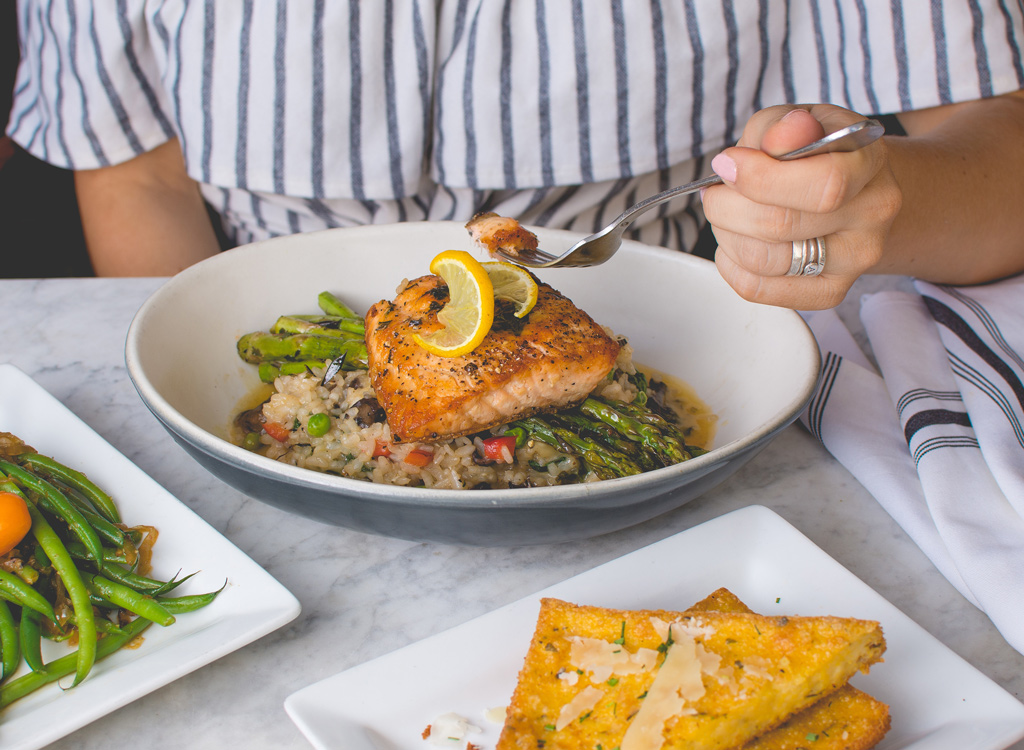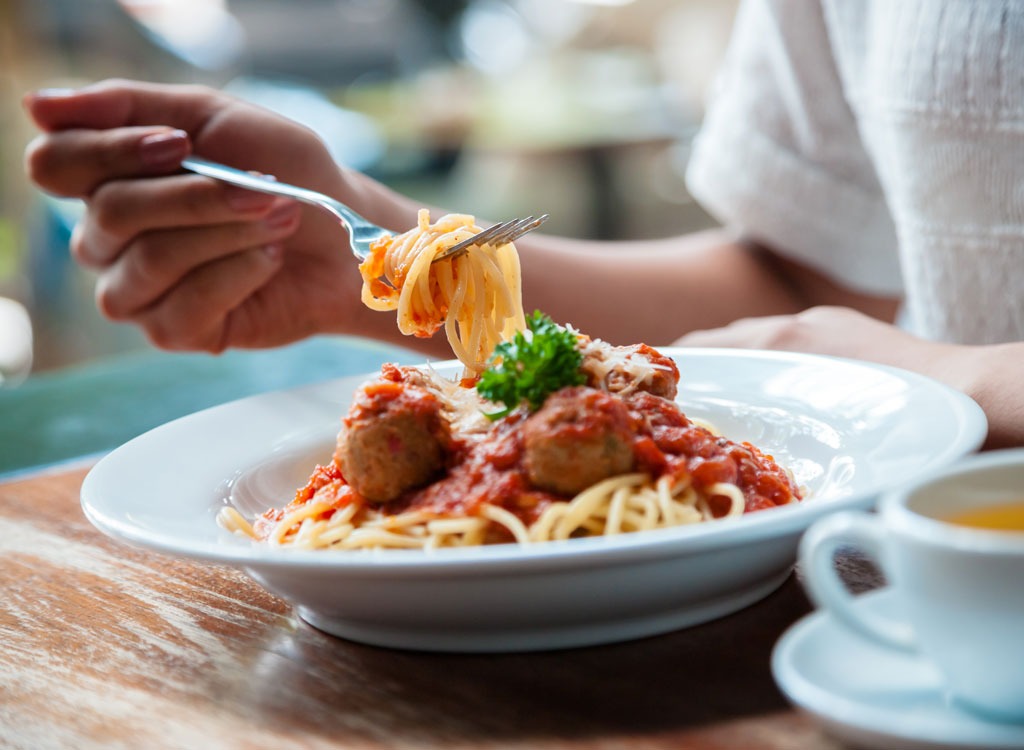Great Weight Loss Habits That Work, According to Experts

The basics of mindful eating are pretty simple: You savor your food as you eat it by engaging all of your senses, and you eat it slowly. This leads to a more considered approach to eating, and thus more responsible choices. In fact, mindful eating starts before you eat. It's about deciding: Do I really want this? What is my body—not my mind—telling me? With these practices and tricks of the trade, these weight loss habits can help you learn that mindful eating is not about deprivation, but about choice.
Here are the best weight loss habits that actually work, according to experts. And for more weight loss tips, be sure to check out our list of 15 Underrated Weight Loss Tips That Actually Work.
Consider your choice first.

If you can condition yourself to pause and consider your food choice before you commit your tongue, you have learned a great secret of mindful eating. Is this something you really want to be eating? This is the easiest way to start tapping into the practice of intuitive eating. Start today with this Beginner's Guide to Intuitive Eating.
Know your motive.

German researchers sorted the reasons we eat into 15 core motives. Check 'em out; you'll recognize many of your own drivers for diving in that have nothing to do with being hungry. Getting to know them is one key to mastering mindful eating.
- Liking: I eat this food because it tastes good.
- Habit: This is something I'm accustomed to eating regularly.
- Need and hunger: I am hungry or need an energy boost.
- Health: I'm trying to maintain a balanced diet or stay in shape, and this food achieves that goal.
- Convenience: This food is quick or easy to prepare, convenient, or readily available.
- Pleasure: I want to indulge or reward myself. This food puts me in a good mood.
- Tradition: My family always eats this food on this holiday. I always snack on this food during this activity.
- Natural concerns: This food is organic, fair trade, environmentally friendly, or natural.
- Sociability: It's pleasant to eat with others. Eating makes social gatherings more enjoyable or comfortable.
- Price: This item is inexpensive, on sale, free, or I've already purchased it.
- Visual appeal: The package is appealing, the food is nicely presented.
- Weight control: This food is low in fat or calories, and I'm trying to lose weight.
- Emotional regulation: I'm sad, frustrated, lonely, bored, or stressed, and this food cheers me up.
- Social norms: It would be impolite not to eat this—I wouldn't want to disappoint.
- Social image: This food is trendy right now and reinforces the image I want to portray.
Here is More Proof that Mindful Eating Is Key to Weight Loss.
Snack up.

Snacks keep hunger at bay so you don't run to the vending machine at work or grab a Friday doughnut at the office. If you have them handy every day, you won't be tempted by sugar-filled or calorie-dense packaged foods. Making your own at the beginning of the week helps you be proactive about mindful eating and gives you the goods for healthier snacking.
Here are 7 Healthy Snacking Habits for a Flat Belly.
Pretend you're a food critic.

Your job isn't just to scarf down the food on your plate—you have to take note of the presentation, the nuances of every flavor, and how satisfying each item is.
"When you bite into a grape, all of these juices come out and there are sensations you'd totally miss if you just stuffed a handful of grapes into your mouth," says Katie Rickel, PhD, a clinical psychologist and weight-loss expert who works at a weight-management facility in Durham, North Carolina. "Try to follow the first bite down your esophagus and into your belly, and take a moment to notice whether you feel one grape more energetic."
In mindful eating workshops, people first practice this with just three or four raisins.
"That really brings people's attention down to their sensory experience," says Jennifer Daubenmier, PhD, an assistant professor at the Osher Center for Integrative Medicine at the University of California—San Francisco. "They really notice the texture, the smell, and the thoughts that come up."
For more healthy eating tips, be sure to sign up for our newsletter.
Observe your inner experience.

You can drag out your meal for two hours, but all of that extra time doesn't mean a thing if you aren't paying attention to what's happening inside your body and mind. To truly be mindful, you need to take note of every sensation and urge: How do I know when I'm hungry? What sensations do I experience? What does it feel like when I'm emotionally, but not physically, hungry? How do I know when I'm full?








